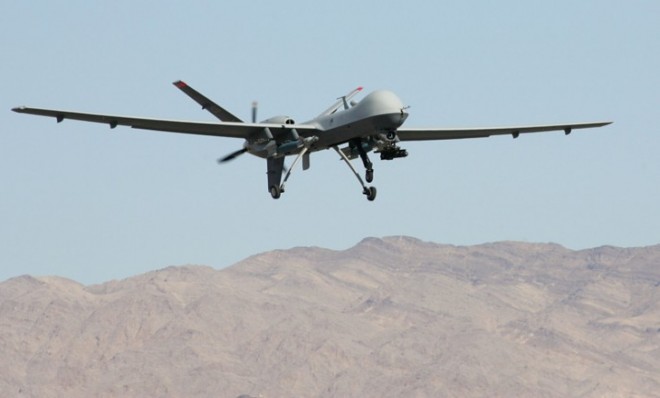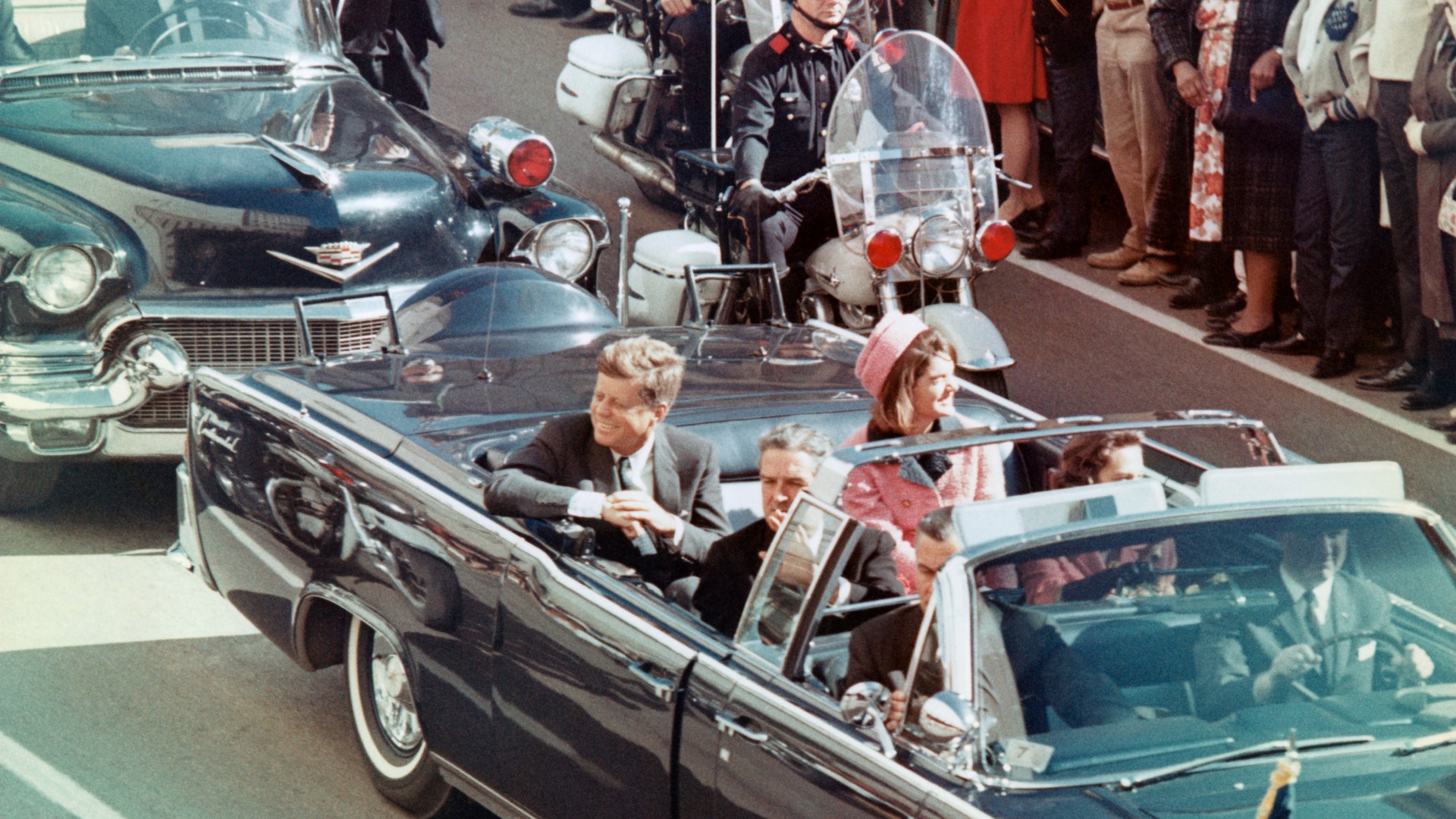The rise of drone warfare: By the numbers
Team Obama is preparing to beef up its already dominant U.S. fleet of surveillance and combat drones, and other countries are racing to catch up


Human rights activists this week stepped up their criticism of President Obama's use of armed drones to kill terrorism suspects, after The New York Times reported that the Obama administration is drawing up a rule book spelling out when such targeted assassinations are justified. The U.S. military and intelligence agencies are increasingly relying on remotely controlled aircraft for surveillance and for taking out enemies, and other nations are scrambling to catch up by putting their own drones in the air. Here, a look at this 21st century arms race, by the numbers:
2,500
Estimated minimum number of people who have been killed in attacks by armed American unmanned aircraft since President Obama took office
The Week
Escape your echo chamber. Get the facts behind the news, plus analysis from multiple perspectives.

Sign up for The Week's Free Newsletters
From our morning news briefing to a weekly Good News Newsletter, get the best of The Week delivered directly to your inbox.
From our morning news briefing to a weekly Good News Newsletter, get the best of The Week delivered directly to your inbox.
2,341
Suspected Taliban and al Qaeda leaders who have been killed by U.S. drones in Pakistan since 2004
1
U.S. airstrike in Pakistan in 2004
A free daily email with the biggest news stories of the day – and the best features from TheWeek.com
35
U.S. airstrikes in Pakistan in 2008
117
U.S. drone strikes in Pakistan in 2009. That was President Obama's first year in office, and the year when these attacks peaked.
1,160
Unmanned aerial vehicle strikes the U.S. has launched in Afghanistan since 2009
50
U.S. drone strikes in Yemen since February, when The New York Times reported that the U.S. was aiming to kill two dozen al Qaeda leaders in the country. In the same period, the local al Qaeda franchise — al Qaeda in the Arabian Peninsula — has grown from "several hundred" to "a few thousand members."
25
New models of sophisticated drones unveiled by Chinese companies at the Zhuhai air show in southeastern China last November. One presentation even featured an animation showing an armed drone attacking an American aircraft carrier.
1,250
Range, in miles, of a Shahed-129, Iran's newest drone
988
Miles between Tehran and Tel Aviv
8,000
Drones in the U.S. arsenal today
$36.9 billion
Amount the U.S. plans to invest to increase the size of its surveillance- and combat-drone force by 35 percent over the next eight years
$94 billion
Estimated global spending on research and purchase of drones over the next decade
$9 billion
Chunk of that money that will be spent on remotely piloted combat aircraft
50
Countries that already have unmanned aerial vehicles. Most of them are surveillance drones, although many could be fitted with missiles or bombs fairly easily. "I think of where the airplane was at the start of World War I: At first it was unarmed and limited to a handful of countries," P. W. Singer of the Brookings Institution, author of the 2009 robotic combat primer Wired for War, tells The New York Times. "Then it was armed and everywhere. That is the path we're on."
Sources: Huffington Post, Long War Journal, New York Times (2), ProPublica
Harold Maass is a contributing editor at The Week. He has been writing for The Week since the 2001 debut of the U.S. print edition and served as editor of TheWeek.com when it launched in 2008. Harold started his career as a newspaper reporter in South Florida and Haiti. He has previously worked for a variety of news outlets, including The Miami Herald, ABC News and Fox News, and for several years wrote a daily roundup of financial news for The Week and Yahoo Finance.
-
 Trump’s poll collapse: can he stop the slide?
Trump’s poll collapse: can he stop the slide?Talking Point President who promised to ease cost-of-living has found that US economic woes can’t be solved ‘via executive fiat’
-
 Sudoku hard: December 7, 2025
Sudoku hard: December 7, 2025The daily hard sudoku puzzle from The Week
-
 Codeword: December 7, 2025
Codeword: December 7, 2025The daily codeword puzzle from The Week
-
 Has Zohran Mamdani shown the Democrats how to win again?
Has Zohran Mamdani shown the Democrats how to win again?Today’s Big Question New York City mayoral election touted as victory for left-wing populists but moderate centrist wins elsewhere present more complex path for Democratic Party
-
 Millions turn out for anti-Trump ‘No Kings’ rallies
Millions turn out for anti-Trump ‘No Kings’ ralliesSpeed Read An estimated 7 million people participated, 2 million more than at the first ‘No Kings’ protest in June
-
 Ghislaine Maxwell: angling for a Trump pardon
Ghislaine Maxwell: angling for a Trump pardonTalking Point Convicted sex trafficker's testimony could shed new light on president's links to Jeffrey Epstein
-
 The last words and final moments of 40 presidents
The last words and final moments of 40 presidentsThe Explainer Some are eloquent quotes worthy of the holders of the highest office in the nation, and others... aren't
-
 The JFK files: the truth at last?
The JFK files: the truth at last?In The Spotlight More than 64,000 previously classified documents relating the 1963 assassination of John F. Kennedy have been released by the Trump administration
-
 'Seriously, not literally': how should the world take Donald Trump?
'Seriously, not literally': how should the world take Donald Trump?Today's big question White House rhetoric and reality look likely to become increasingly blurred
-
 Will Trump's 'madman' strategy pay off?
Will Trump's 'madman' strategy pay off?Today's Big Question Incoming US president likes to seem unpredictable but, this time round, world leaders could be wise to his playbook
-
 Democrats vs. Republicans: who are US billionaires backing?
Democrats vs. Republicans: who are US billionaires backing?The Explainer Younger tech titans join 'boys' club throwing money and support' behind President Trump, while older plutocrats quietly rebuke new administration
